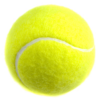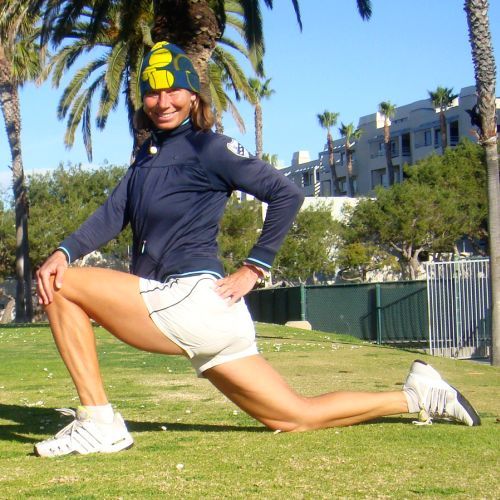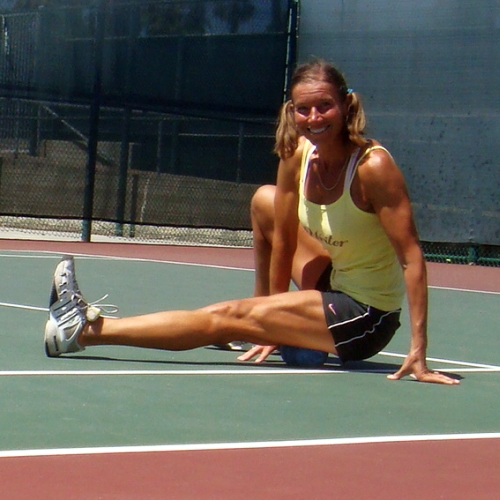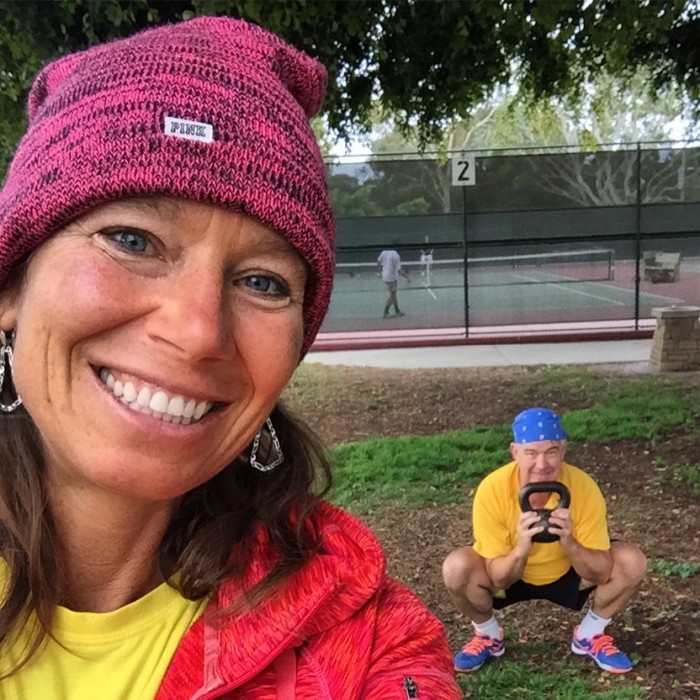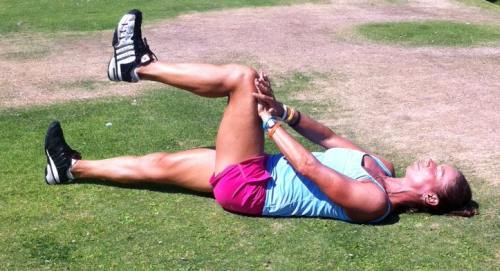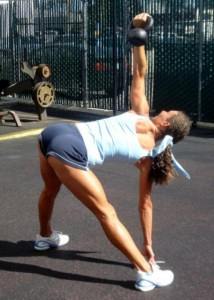 Strong and beautiful glutes are pleasure for the eye. More so, functional glutes are crucial for proper function and maximum athletic performance. Many injuries and pains are attributed to dysfunction or even atrophy of the glutes. If a reduced activation or complete inhibition of the glutes happens, other muscle groups compensate and get overused. Over time, many problems such as lower back issues, knee pain or ankle sprains may happen.
Strong and beautiful glutes are pleasure for the eye. More so, functional glutes are crucial for proper function and maximum athletic performance. Many injuries and pains are attributed to dysfunction or even atrophy of the glutes. If a reduced activation or complete inhibition of the glutes happens, other muscle groups compensate and get overused. Over time, many problems such as lower back issues, knee pain or ankle sprains may happen.
It works in reverse as well. For example, if you sprain your ankle, and don’t perform correct rehabilitation, you may alter your body movement, such as walking or running gait, your stance, or posture, and that will add to more to the imbalances and glute inhibition and thus losing even more function.
Optimal Posture
For a tennis player, correct posture and optimal alignment are crucial, because they absorb the shocks during running on the court, and help transfer the forces through kinetic chain during your shots.
Optimal posture makes your movement more fluid and efficient with less stress on your joints, you won’t fatigue as fast, and you will have less chance to sustain overuse injuries.
The glutes consist of 3 muscles: gluteus maximus, gluteus medius, and gluteus minimus. They extend the hip and trunk and rotate the hip externally.
For your glutes to perform optimally when moving on the tennis court, all the surrounding muscles need to be functional, strong, and flexible. If your hamstrings, hip flexors, TFL (tensor fascia latae), adductors, and lower back erectors are too tight or weak, then different compensation will happen and possibly cause even further inhibition of your glutes, and therefore more compensation of surrounding muscles. This vicious circle needs to be broken with concentrated glute isolation training, and then gradually introducing movements that are more functional and tennis specific.
Gluteal Inhibition
If you are a student or have a regular work besides playing tennis, you probably sit quite a lot. In a seated position, your torso remains in flexed position relative to the upper leg for extended periods, which can lead to increased tension and shortening of the hip flexor muscles. This will cause an anterior pelvic tilt, which impedes the powerful glute muscles and causes tension in your hamstrings. This fact of tight hip flexors inhibiting the glute muscles is called “reciprocal inhibition” and it is not a good thing even though it sounds cool.
The constant pressure and minimal use of your glutes will cause atrophy and surrounding muscles will compensate during the movements where glutes are called upon but cannot perform. Muscular imbalances and excessive stress on the joints will happen. During athletic performance, the lower back gets a lot of stress and beating because it also compensates for the lacking glutes, overuse injuries are more likely to happen, and performance will decrease tremendously.
This glute inhibition may just “sneak up” on you. One day you start experiencing lower back pains and other injuries and you don’t know why. Don’t wait until that day will come. Start taking a good care of your glutes today, and you will keep them strong and powerful forever.
Test Your Glutes
I simple test is to lie down on your stomach. Bend your left leg in your knee and then squeeze your left glute and raise your left knee off the ground. Hold the position for 60 seconds, without tilting your hips or pushing with your arms to the ground. Switch sides. Was one side harder to do? Or was it almost impossible? If so, the glutes on that side are getting inhibited.
Reconnect Your Glutes
Perform the above exercise contracting the glute for 10 seconds, relax briefly, and contract again. Repeat 10 times, then switch to the other side. Always start with the weaker side, then do the better side and return one more time to the weaker side.
One Legged Bridge
Lie down on your back; bring both heels as close to your glutes as possible, arms on the side of your body. Lift the left leg, straighten it and keep it above the ground. Push the hips up toward the sky by pushing with the right heel to the ground and contracting your right hamstrings and glutes. Hold the top position for 1 second and slowly return to the start position. Repeat 12-20 times for one side, then switch to the other side. If this is too difficult at first, you can do the bridge with both legs on the ground. As you get stronger, advance to one-legged bridge.
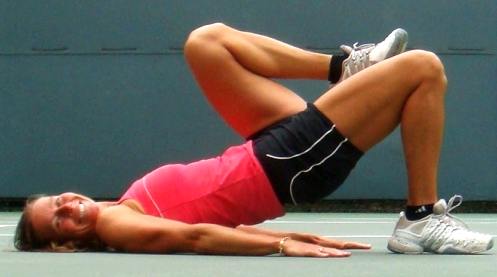
Peeing Doggie
Get down on all your four, hands and knees. Keep your back straight and lift your left knee straight to the side as high as possible without tilting the hips. Imagine your hips are like a tabletop where drinks are served. Repeat 15-20 times, then switch sides.
Backward Walking
The gluteus maximus strongly assists during backward walking. If it is weak or inhibited, you may experience lack of coordination or some level of awkwardness.
Single Leg Deadlift
Stand on your right leg, hold the weight or kettlebell in front of you. With a straight back, start lifting the left heel up toward the sky, and let the upper body is lower toward the ground. When you feel a stretch and tension in your right hamstring and glute, reverse the movement, and slowly stand up to starting position. Repeat 12-15 times for each leg. Video here.
Functional Strengthening
When you have done all the isolation exercises and you feel that you have reconnected with your glutes, you can move on to perform squats, lunges, jumps, kettlebell swings, and other functional exercises.
Make sure that you always take a good care of your glutes. Don’t let them disconnect or atrophy. The more sedentary you are besides your tennis and fitness activities, the more careful and dedicated to your glutes you need to be. They will be not just perfectly functional, but also a candy for the eye. Your tennis performance will benefit as well.
And remember, if your hip flexors get too tight, you may enter the vicious circle of reciprocal inhibition. Stretch your hip flexors and quadriceps regularly, and even better perform self-myofascial release.
Books to Read:
1) Bounce: Mozart, Federer, Picasso, Beckham, and the Science of Success (P.S.)
If you want to understand what needs to be one to become a master, and what biology, economics, psychology, culture, genetics, race, and politics have to do with it. It is a VERY good book for every athlete!
2) Anticancer, A New Way of Life, New Edition
Excellent reading with information and tips on how people living with cancer can fight it and how healthy people can prevent it, talks about nutrition, fitness, mental aspects, and it’s based on studies. Very educational.
3) Tennis Fitness for the Love of it: A Mindful Approach to Fitness for Injury-free Tennis
Maybe I am a bit biased 😉 but you will find there all good information on stretching, myofascial release, injury prevention, strengthening and performance improvement. The winter months are great for working on your fitness!
Are you planning to shop health and fitness for Christmas?
| Get your kettlebells and other fitness & injury prevention products at Power-systems.com. Good quality, good price... Use code FITMAS to get amazing discounts until Christmas 2014. |
